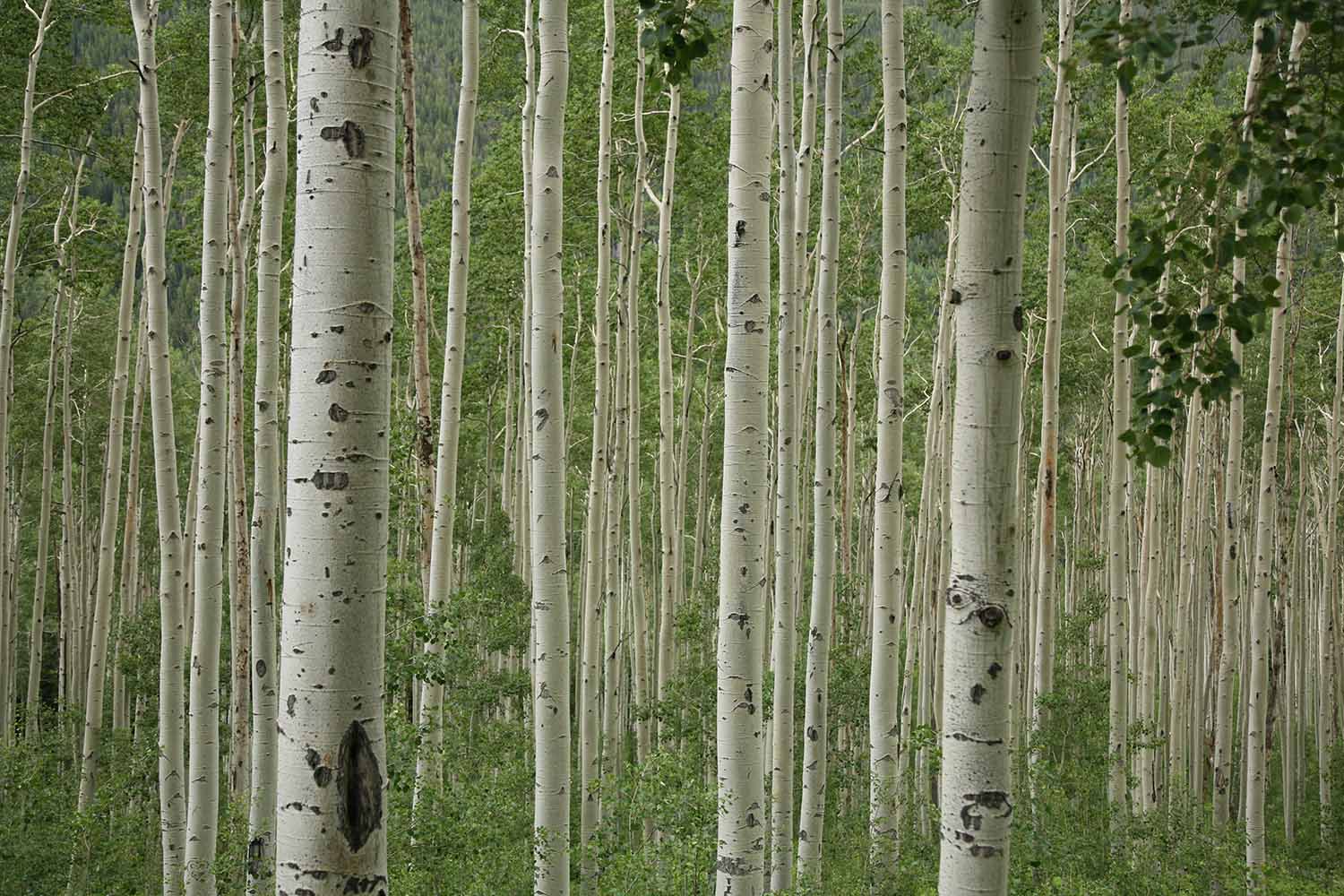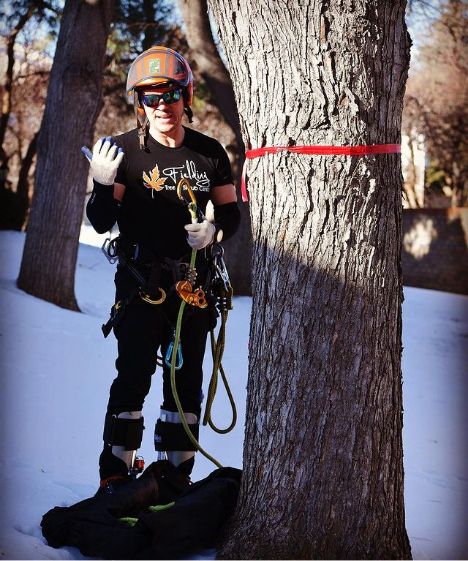When it comes to natural beauty, nothing beats the majestic aspen. Who doesn’t love going up to the mountains to watch the aspens “on fire” in the fall? Their brilliant yellow leaves contrast spectacularly with the cloudless, blue backdrop of a Colorado sky. They are truly one of Colorado’s treasures.
Sadly, many Denver residents are unexpectedly losing these natural treasures. In recent years, we have received an alarming number of calls from folks who report that their Colorado aspen trees are suddenly dying—situations that often require expert tree care in Denver to diagnose and address.
We’ve put together this infoguide to help you figure out what’s going on with your aspen trees. But first, we have a bit of background to cover to understand how aspens grow.
Clones of Aspens
Aspens are not only unique for their unrivaled beauty, but they are also truly viewed as biological marvels. Aspens may remain dormant for many years, only breaching the soil when weather conditions are near-perfect. A group of aspens is called a stand or clone. Each tree is one part of a larger, single organism. A stand of aspen trees all share the same root system. Each tree in the group is a genetic copy of the others. This is why a group of aspens is also referred to as a clone.
The Oldest Aspens on the Planet
A clone of aspens in Utah’s Fishlake National Forest holds the prestigious distinction of being the oldest living organism on the planet. The clone is more than 80,000 years old. It is also estimated to be the heaviest organism on the planet. It is estimated to weigh in at a whopping 6,600 tons.
The Natural Lifespan of Aspens
Even though aspens are one of Denver’s natural treasures, Denver is not a particularly hospitable environment for these natural beauties. The maximum life expectancy for an individual aspen tree is approximately 150 years. No, that’s not a typo: 150 years! However, Denver’s altitude drastically reduces the lifespan of an aspen to somewhere in the neighborhood of 15 years.
So, Why Are YOUR Aspen Trees Dying?
It is becoming an increasingly common tragedy for large stands of aspens to fall victim to an unknown natural nemesis. Entomologists investigating the sudden and unexplained deaths of large clones of aspen trees have named the troubling phenomena SAD, Sudden Aspen Decline. SAD is an epidemic wreaking havoc on the aspen population across the western United States as well as western parts of Canada. Entomologists are still following clues to track down the culprit of Sudden Aspen Decline.
However, current research seems to be pointing a finger at climate change. Climate change brought a drought to Denver in the early 2000s. The shortage of precipitation seems to be the catalyst for multiple secondary factors that may be contributing to the downfall of the majestic aspen.
Recently, a group of researchers from the U.S. Forest Service took to the forests of Colorado to uncover exactly what is killing these gems of Colorado’s forests. The researchers discovered that nearly every diseased tree was home to Bronze Poplar Borer Larva. As the name suggests, these are insects that bore holes into the aspen tree. They are not a new species, but most aspen researchers had never heard of them until recent years.
These beetle larvae are typically not fatal, but they could be one of two factors contributing to the untimely demise of many Denver aspens. Drought conditions cause aspens to constrict the pores in their leaves. This is a natural survival mechanism. This reaction helps the tree to retain water. Unfortunately, it also slows the intake of carbon dioxide.
An insufficient supply of carbon dioxide hinders the tree’s ability to perform photosynthesis, a process by which plants convert sunlight into energy. The boring insects are weakening the trees. Researchers suspect once the trees are weakened by the beetles, they are not able to survive with a slower photosynthesis process.
We Are Denver’s Biggest Fans
Our Fielding Tree Care team are experts when it comes to caring for your aspen trees. If you have issues with your aspen trees we will get to the root of the problem. Reach out today to schedule an appointment. We are here to help you keep your landscaping looking ‘tree-mendous’.






